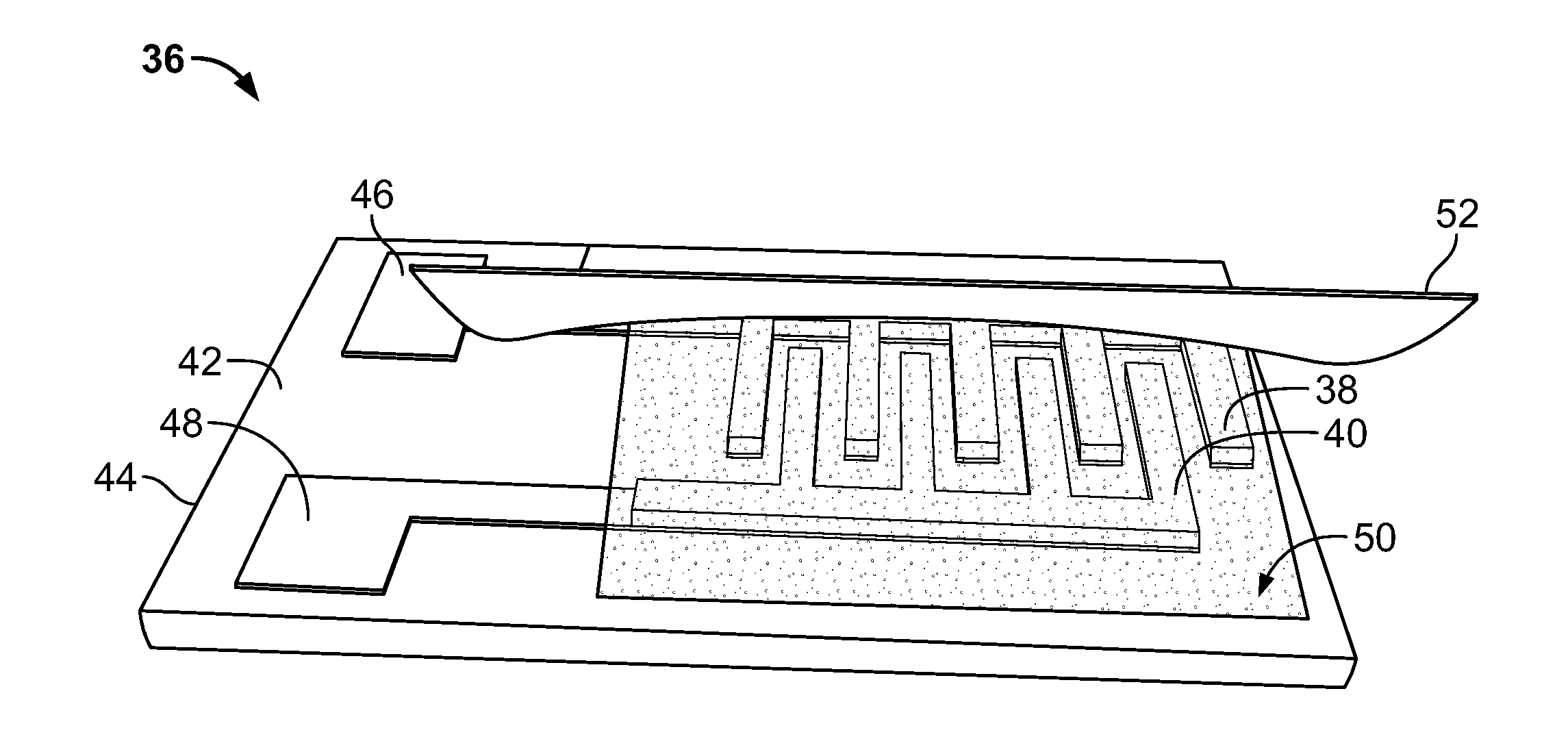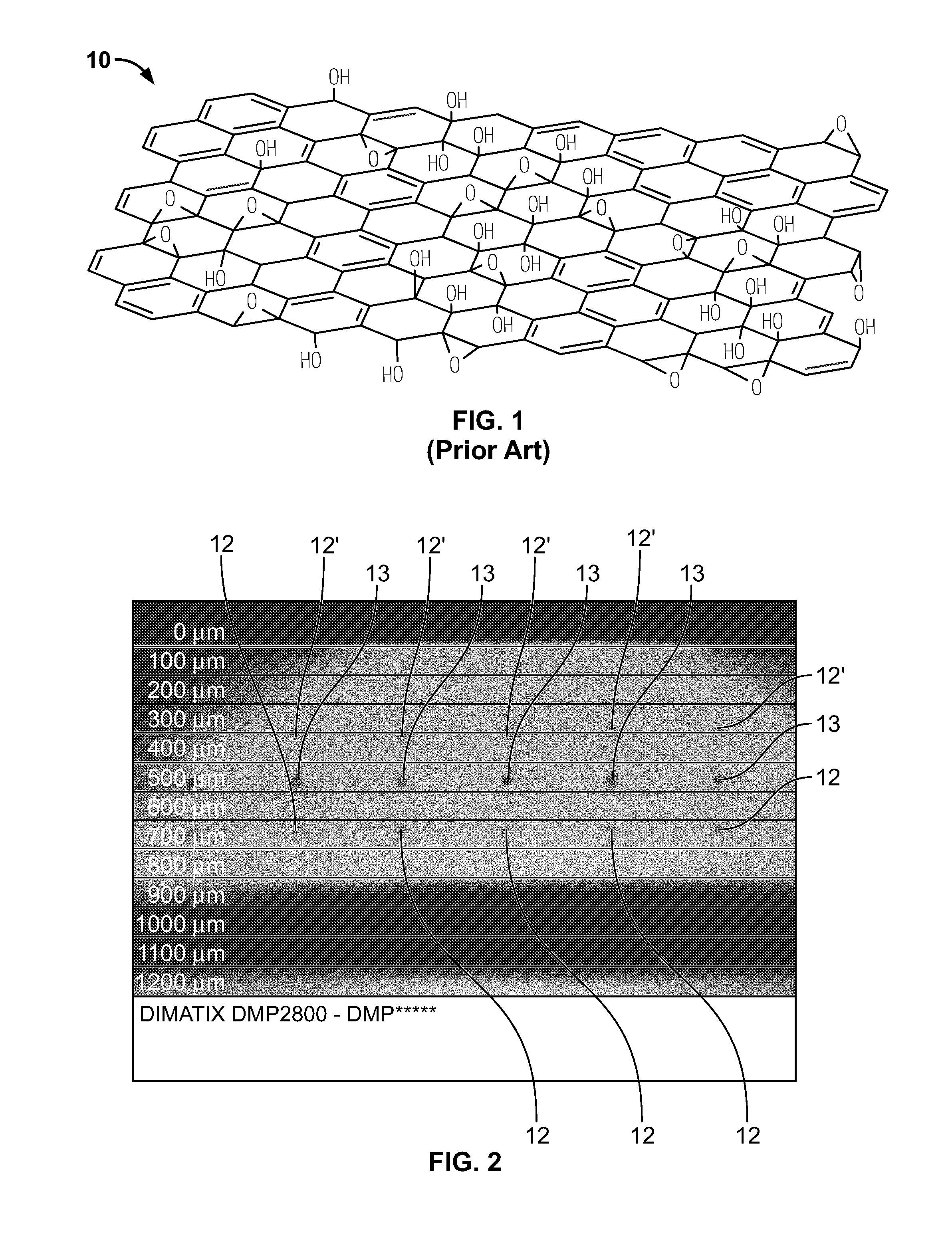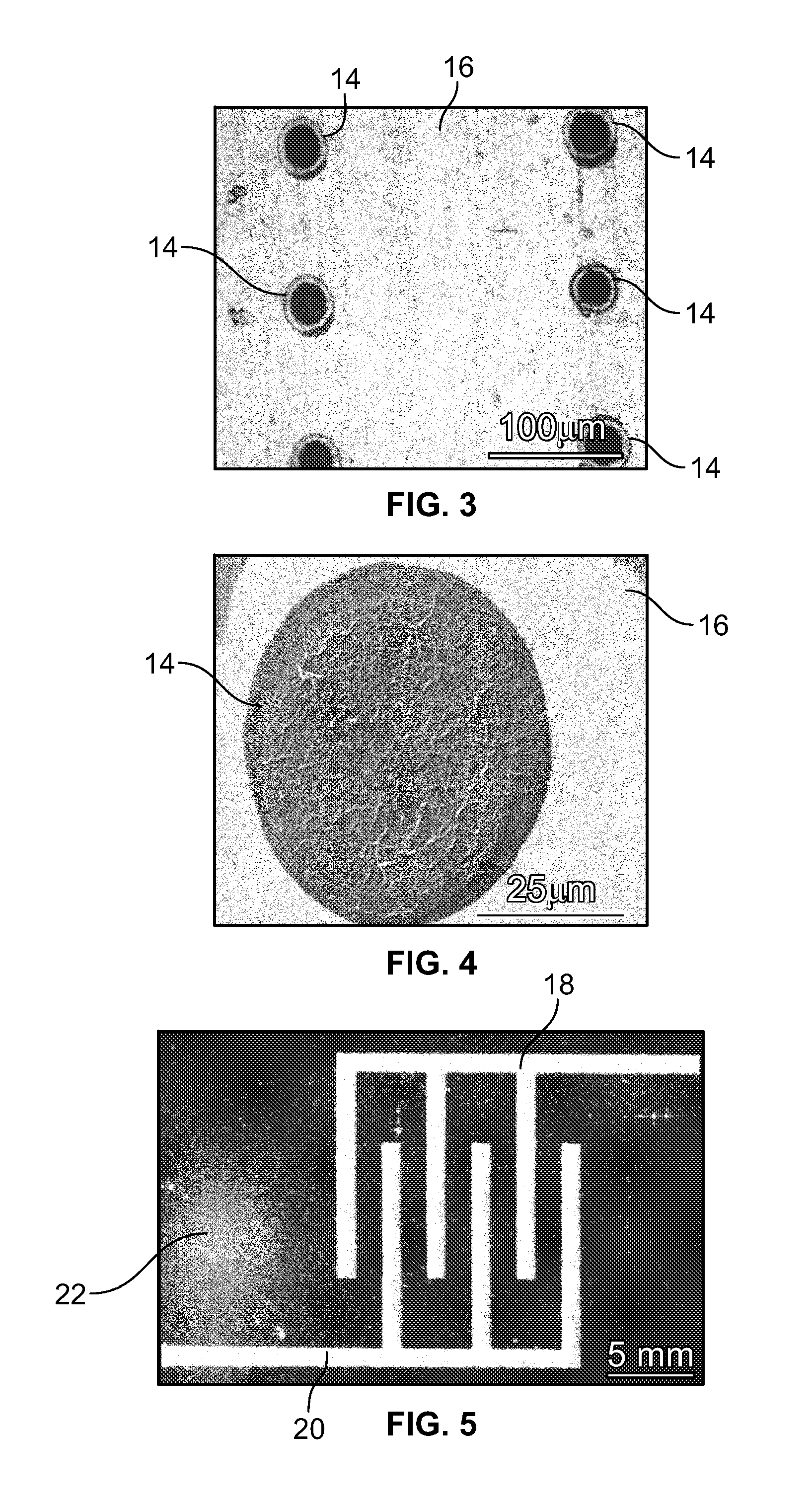Inkjet-printed flexible electronic components from graphene oxide
a flexible electronic component and graphene oxide technology, applied in the incorporation of printed capacitors, liquid electrolytic capacitors, electrolytic capacitors, etc., can solve the problems of limited charge/discharge rate, limited specific power of best available lithium-ion batteries, and limited life of rechargeable batteries. , to achieve the effect of increasing the electrical conductivity of the printed graphene oxide electrod
- Summary
- Abstract
- Description
- Claims
- Application Information
AI Technical Summary
Benefits of technology
Problems solved by technology
Method used
Image
Examples
Embodiment Construction
[0028]The following detailed description of the invention includes a discussion of exemplary embodiments of inkjet-printed graphene electrodes, methods for producing such inkjet-printed graphene electrodes, and electronic devices incorporating such inkjet-printed graphene electrodes. It will be understood by those having ordinary skill in the relevant arts that many variations and modifications may be made to these exemplary embodiments without departing from the spirit and scope of the invention.
[0029]The recent development of methods for producing large quantities of hydrophilic graphene oxide at reasonable prices presents a unique opportunity for the use of graphene oxide as an ink for scalable inkjet-printing in terms of printing speed and process robustness. Just like graphene, graphene oxide has very high specific surface area. Although graphene oxide has a low electrical conductivity, it can be thermally or chemically reduced to increase electrical sheet conductance to levels...
PUM
| Property | Measurement | Unit |
|---|---|---|
| transparency | aaaaa | aaaaa |
| temperature | aaaaa | aaaaa |
| thickness | aaaaa | aaaaa |
Abstract
Description
Claims
Application Information
 Login to View More
Login to View More - R&D
- Intellectual Property
- Life Sciences
- Materials
- Tech Scout
- Unparalleled Data Quality
- Higher Quality Content
- 60% Fewer Hallucinations
Browse by: Latest US Patents, China's latest patents, Technical Efficacy Thesaurus, Application Domain, Technology Topic, Popular Technical Reports.
© 2025 PatSnap. All rights reserved.Legal|Privacy policy|Modern Slavery Act Transparency Statement|Sitemap|About US| Contact US: help@patsnap.com



